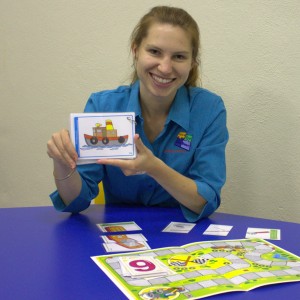 Phonological Awareness is the ability to hear and understand sounds and sound patterns within words. Last week we looked at the earliest skills needed to develop early literacy; understanding rhyme, syllables and beginning sounds. Today we will look at the next steps of blending and segmenting sounds in words.
Phonological Awareness is the ability to hear and understand sounds and sound patterns within words. Last week we looked at the earliest skills needed to develop early literacy; understanding rhyme, syllables and beginning sounds. Today we will look at the next steps of blending and segmenting sounds in words.
New or struggling readers and writers are working hard to use all kinds of techniques, breaking words down into syllables and letters, connecting the letters to sounds, then trying to blend them back again into words. All this can be slow and effortful for some kids so that by the time they work out one or two words they have forgotten what they read or wrote before, making understanding what they are reading so much harder. Comprehending content makes reading quicker and easier, and reading quicker makes understanding easier. Helping kids learn to segment and blend words easily, quickly and accurately makes reading and writing as well as comprehension easier. This helps kids be more confident and enjoy reading more and so get more practice, creating an upward spiral of success.
 One thing that really helps in all of this is practice. The more kids practice the quicker their skills will improve, so here are some ideas to help make developing these skills fun. The fun part helps kids want to practice until they reach the level where skills are automatic. It's like learning to drive, at first you need to think about what your hands, feet and eyes are doing but with practice it becomes automatic and you can sit back and enjoy the passing scenery.
One thing that really helps in all of this is practice. The more kids practice the quicker their skills will improve, so here are some ideas to help make developing these skills fun. The fun part helps kids want to practice until they reach the level where skills are automatic. It's like learning to drive, at first you need to think about what your hands, feet and eyes are doing but with practice it becomes automatic and you can sit back and enjoy the passing scenery.
Some years ago some of the Talking Matters team attended a workshop on phonological awareness by Love and Reilly. One comment that sticks in my mind was that "phonological awareness and phonics is something that you need to learn and then forget". What this means is that skilled readers and writers don't concentrate on what they are doing when they read and write, they do it automatically, freeing up their thoughts to concentrate on the meaning and content of the text instead.
A hierachy of words for segmenting, blending and manipulating sounds. When a child begins practicing spelling it is easier for them to begin with short vowels first. Some children will be able to move from simple two sound words like ‘it’, ‘am’ and up’ to three sound words like ‘cat’, ‘dog’, ‘pig’ quite quickly. Many children find it difficult to stretch and hear both sounds in a cluster when they practice 4 sound words such as ‘slip’, ‘nest’ and ‘drop’. Follow the heirachy below to work through words from simplest to hardest. Remember we are talking initially about sounds not letters, so "bead" has three sounds "b-ee-d" and so is easier than "drop" which has four sounds "d-r-o-p". When your child can hear sounds well and you want to move into incorporating writing and spelling, short vowels are easier than long ones, so focus on those first.
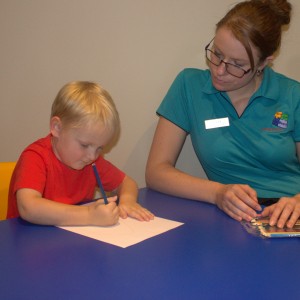 When choosing words we need to know which words are easier and which ones are harder. The list below is sorted from easy to more difficult:
When choosing words we need to know which words are easier and which ones are harder. The list below is sorted from easy to more difficult:
- 2 sounds with a short vowel (e.g. up, it)
- 2 sounds with a long vowel (e.g. my, see, day)
- 3 sounds with a short vowel (e.g. pig, cat, dog)
- 3 sounds with a long vowel (e.g. bead, seat, soap)
- 4 sounds with a short vowel (e.g. slap, drop, clip)
- 4 sounds with a long vowel (e.g. slope, steep, bread)
- 5 sounds with a short vowel (e.g. strip, drips)
- 5 sounds with a long vowel (e.g. stripe, droops)
Getting Started
- Children need many opportunities to see and then practice new things when learning them. Make sure you are showing and teaching your child, not testing them, and give them plenty of practice and repetition before moving onto the next step.
- Choose words at the correct level for your child. Start with easier words and move to harder words only when your child is confident at each level.
- Choose your words carefully to make sure they have the correct type of vowel (short or long) and are phonetically regular. Phonetically regular words are spelt exactly the way they sound, such as ‘cat’ or ‘pig’. Words like “was” or “is” ( which sound like ‘woz’ and ‘iz’) need to be memorised rather than sounded out and are not phonetically regular. These words known as sight words, because they are learned by sight, are best learned in a different way and so should not be included in your segmenting activities.
- Remember, we are talking about sounds, not letters e.g. ‘day’ has only 2 sounds, but 3 letters to write it. The ‘ay’ part of the word is a long vowel sound.
- Your child should practice words at the level they are working on until they are correct 90% of the time (9 times out of 10), without any extra help or clues.
- When your child moves from one level to the next you can expect them to find it difficult. You will probably need to give them a bit of extra help and show them more times than you did with easier words to help them to learn this new and more complex skill.
- Make sure your child always feels good about themselves when working with you. If the activity is so difficult that they are making lots of mistakes at the new level make it a ‘watching and thinking activity’. Let them continue to do it at a level they are successful at while they ‘watch’ and ‘learn’ about the next level as you do it for them and they watch.
- Be sure to be clear in your labels so you don’t confuse your child. Sounds are what we hear, and letters are the symbols we use to write the sounds down. Try not to mix these up.
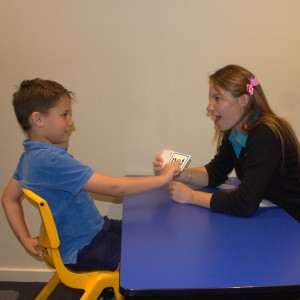 Blending sounds
Blending sounds
In this activity you say the sounds and your child puts them together to form words. Later your child will look at letters, say the sounds and blend them into words and they are off and reading. Begin with listening to the sounds first and using pictures or objects without written words. Choose words using the heirachy above. You can download these pictures to use.
To begin blending sounds start with the two sound pictures.
- Print the page out for your child.
- Show your child the pictures and tell them the name of each one.
- Give your child some stickers, counters or buttons.
- Sound out a word, breaking up the sounds and pausing in between "s-ee".
- Ask your child to put the sounds together, say the word and then put the sticker or counter on the picture.
Continue to practice until your child can blend the words quickly and easily then repeat with the next level on the hierachy.
Other ways to practice blending:
Play bingo by printing two copies of the picture sheet. Cut one sheet in half to make two bingo cards. Cut the other sheet into separate pictures and place in a containier. The adult acts as the caller and pulls cards out of the box and sounds out the word. The child blends the words and places a counter on their sheet if they have that word. The first person to cover all their pictures is the winner.
Around the house, sound out things for your child to find. Please pass me a c-u-p etc.
Blending eye spy. Play I spy with my little eye a c-u-p. Ask your child to find it.
Picture books. Look at a picture book together and sound out things for your child to find and blend.
Complete the sentence. Read a story together, when you reach a word with the right number of sounds, sound it out aloud and see if your child can blend it together. "The boy climbed up the t-r-ee"
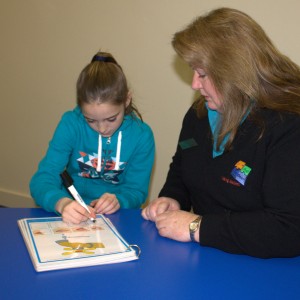 Segmenting sounds is a foundation skill to developing spelling skills. Children need to be able to hear individual sounds in words before they are able to work out what letter to use to write a word. Segmenting is an early spelling skill that can be used to work out new words. Choose words using the heirachy above. You can download these pictures to use with segmenting too.
Segmenting sounds is a foundation skill to developing spelling skills. Children need to be able to hear individual sounds in words before they are able to work out what letter to use to write a word. Segmenting is an early spelling skill that can be used to work out new words. Choose words using the heirachy above. You can download these pictures to use with segmenting too.
To practice segmenting begin with the two sound pictures.
- Print the page out for your child.
- Show your child the pictures and tell them the name of each one.
- Give your child some stickers, counters or buttons.
- Show your child how you can stretch out the word into separate sounds "s-ee"
- Ask your child to say the word, stretch it into separate sounds and then put the sticker or counter on the picture.
Use visual supports to help your child break the words into sounds.
- draw a number of boxes, one for each sound and point to the boxes as you say the sounds,
- make a line of buttons and push one for each sound heard
- stretch the sounds as they come out of your mouth like they were a long piece of chewing gum,
- or tap your head, tummy and bottom to match each individual sound (when there are three sounds).
Continue to practice until your child can sound out the words quickly and easily then repeat with the next level on the hierachy.
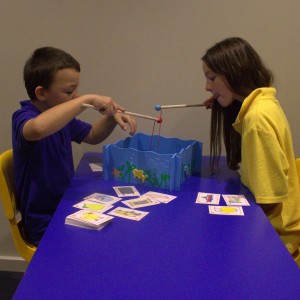 More ideas for practicing segmenting:
More ideas for practicing segmenting:
Print out two sets of the picture cards and use them to play memory, snap and lotto games, segmenting the words as you play.
Put the pictures under bowling pins, roll the ball and sound out the words under the pins that fall.
Play fishing by cutting up the cards, attaching a paper clip and catching the "fish" with a magnet on a string.
Download some games to play with your word cards and sound them out as you play.
Put objects such as toy animals or household items into a bag or pillowcase and take turns to pull one out and sound out the name. Be careful to choose items with the right number of sounds.
When your child can blend and segment words with three or more sounds you can begin to introduce letters to your activities.
Try downloading these sound bingo activities and help your child match the beginnning, ending and middle sounds to pictures to help your child learn to link sounds to letters. Print out the cards and cut up the letters and help your child match them to the pictures, by listening to the beginning, middle and end sounds.
Next download the three sound bingo game and incorporate the segmenting and blending skills as you play. Try the ideas above to vary your practice activties.
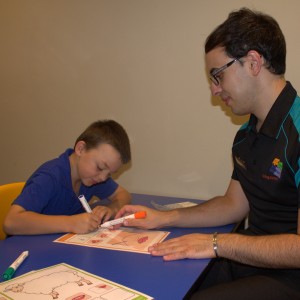 Finally help your child practice writing letters to make the words. You can use pencil and paper, magnetic letters or white boards to form the words. Play the games above and ask your child to make or write the words as you play. Remember at this level to focus on words with short vowels and regular spelling.
Finally help your child practice writing letters to make the words. You can use pencil and paper, magnetic letters or white boards to form the words. Play the games above and ask your child to make or write the words as you play. Remember at this level to focus on words with short vowels and regular spelling.
Children with speech and language delays have extra challenges learning to read and write. Getting support for this as early as possible can reduce the impact of these difficulties on the development of literacy. To find out more about how Talking Matters can help with your child's speech, language and literacy follow the links.
If you are a local professional who is committed to helping kids develop their full potential in literacy and language skills you may be interested in our upcoming workshop based on the work of Diana Rigg of "Promoting Literacy Development". Diana is a special educator and speech pathologist who has developed a range of language and literacy programs and resources for preschool and primary aged children. We will be presenting a workshop in Adelaide in October about using Diana's resources to develop oral language for better literacy skills. Click here to find out more. To find out more about language and literacy visit Diana's webpage. Parents are welcome at the workshops too!
To keep up to date with new resources and information to develop children's language and literacy skills check our Pinterest page. Follow us on Facebook and Twitter to keep up to date with new information, tips and resources.
Jo Brenecki
Related Blog Posts
If you liked this post you may also like:
Using MR/MRS POTATO HEAD To Grow
Developing play
Paper Snowflakes
Why 20% of kids struggle!



